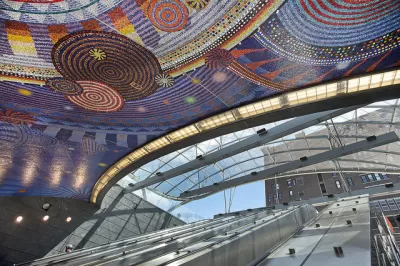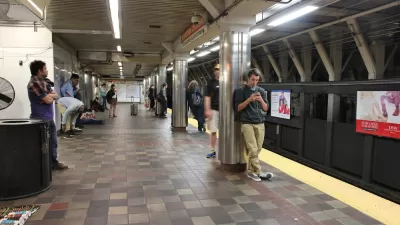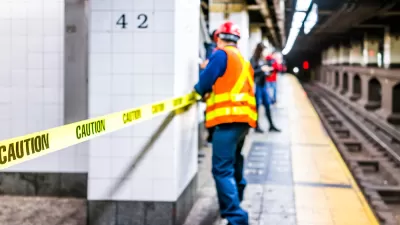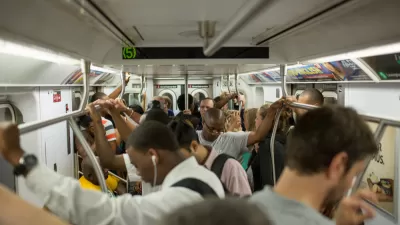It's important for transit to look and feel nice, if only to resurrect its deeply tarnished image in the United States. But ridership depends on good service, not good aesthetics.

For transit riders, beautiful stations and convenient amenities are very welcome. But Yonah Freemark makes an important point about bloated costs. "Anyone who has ever ridden the [New York] Subway knows first hand that its success has nothing to do with aesthetics or access to luxury amenities. Stations are hardly in good shape, trains are packed, and cell service is spotty at best. People ride the Subway in spite of these things; they ride it because it's fast, it's frequent, and it's (relatively) reliable."
When decision-makers favor sleek 21st-century monumentalism, costs soar and service doesn't necessarily improve. "New York's own $4 billion World Trade Center Transportation Hub—perhaps the world's single-most expensive station—is evidence of that; rather than improve service frequency or speed, officials chose to direct public funds to a white monument that does nothing to actually ease the lives of daily commuters."
Freemark cites a recent proposal by Boston's MBTA to cut expenses for its Green Line extension. Simple measures to reduce station sizes and cut out excess canopies and escalators save an impressive $300 million. Other tactics could increase that figure substantially.
Regardless, says Freemark, American transit agencies have been unable to reduce build costs to international standards. Until we can do that, perhaps we should focus on what commuters really care about.
FULL STORY: Frequent service, not escalator access, is what attracts transit users

Maui's Vacation Rental Debate Turns Ugly
Verbal attacks, misinformation campaigns and fistfights plague a high-stakes debate to convert thousands of vacation rentals into long-term housing.

Planetizen Federal Action Tracker
A weekly monitor of how Trump’s orders and actions are impacting planners and planning in America.

In Urban Planning, AI Prompting Could be the New Design Thinking
Creativity has long been key to great urban design. What if we see AI as our new creative partner?

King County Supportive Housing Program Offers Hope for Unhoused Residents
The county is taking a ‘Housing First’ approach that prioritizes getting people into housing, then offering wraparound supportive services.

Researchers Use AI to Get Clearer Picture of US Housing
Analysts are using artificial intelligence to supercharge their research by allowing them to comb through data faster. Though these AI tools can be error prone, they save time and housing researchers are optimistic about the future.

Making Shared Micromobility More Inclusive
Cities and shared mobility system operators can do more to include people with disabilities in planning and operations, per a new report.
Urban Design for Planners 1: Software Tools
This six-course series explores essential urban design concepts using open source software and equips planners with the tools they need to participate fully in the urban design process.
Planning for Universal Design
Learn the tools for implementing Universal Design in planning regulations.
Appalachian Highlands Housing Partners
Gallatin County Department of Planning & Community Development
Heyer Gruel & Associates PA
Mpact (founded as Rail~Volution)
City of Camden Redevelopment Agency
City of Astoria
City of Portland
City of Laramie





























